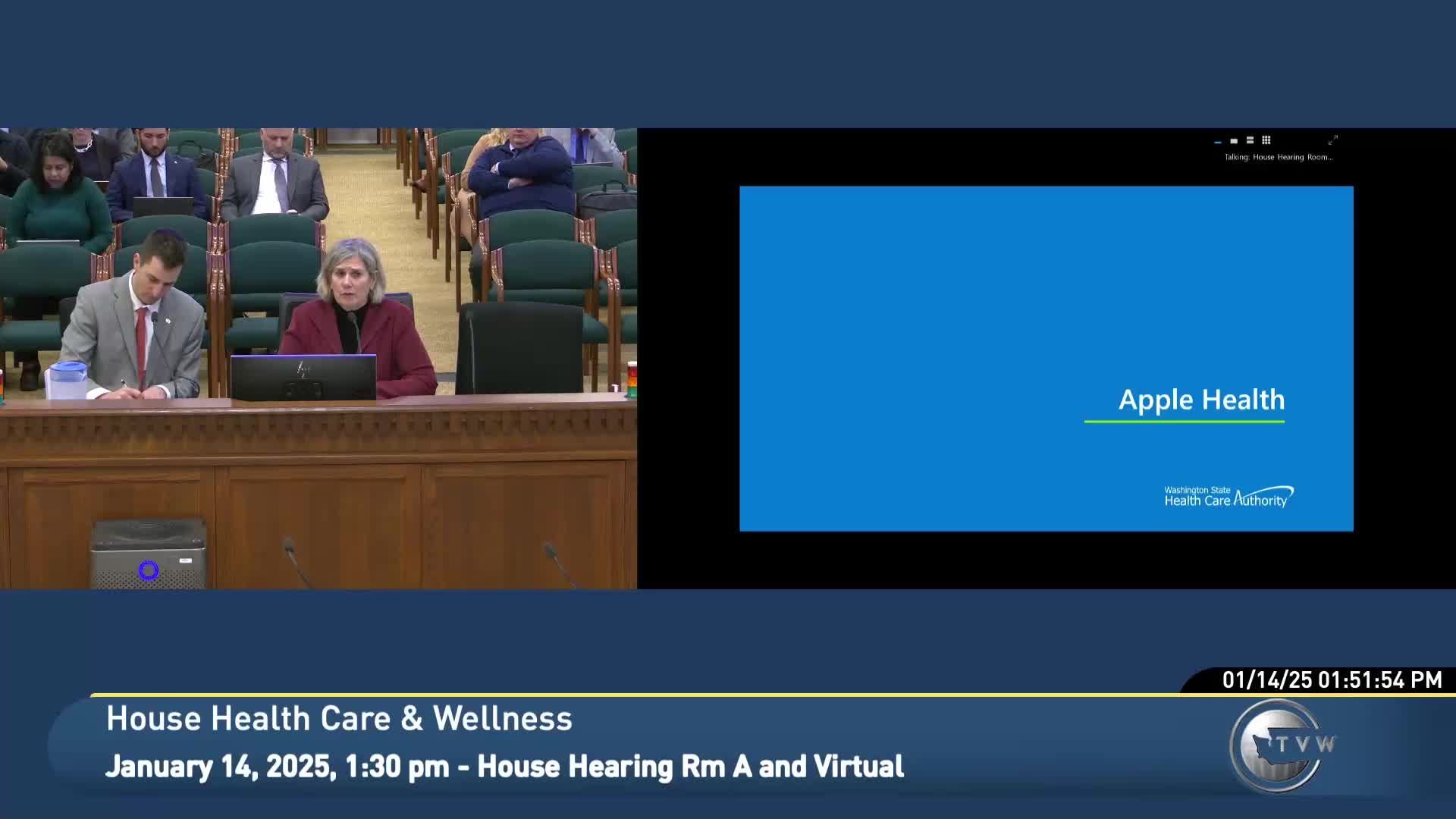JLARC: Public-utility tax credit for home energy assistance reimburses shrinking share of aid, auditors say
January 14, 2025 | Health Care & Wellness, House of Representatives, Legislative Sessions, Washington
This article was created by AI summarizing key points discussed. AI makes mistakes, so for full details and context, please refer to the video of the full meeting. Please report any errors so we can fix them. Report an error »

JLARC presented to the House Finance Committee on Jan. 14 that the public-utility tax credit for home energy assistance reimburses utilities for up to half of energy-assistance costs but likely does not influence how much assistance utilities provide to low-income customers.
Pete Van Moorsil, JLARC staff, told committee members the credit is capped at $2.5 million annually and is allocated by the Department of Revenue to about 60 utilities in proportion to federal LIHEAP (Low Income Home Energy Assistance Program) receipts. "About 30 utilities claim the credit each year," he said.
JLARC reported that utilities increased total energy-assistance from $53.6 million in 2018 to $76.1 million in 2023, while the credit’s share of that assistance fell from 4.7% in 2018 to 3.3% in 2023 because the reimbursement cap did not grow with rising need and energy prices. Van Moorsil said many utilities told auditors the credit did not affect how much assistance they provide. The increasing retail price of electricity and natural gas reduced the purchasing power of the credit, he added.
The legislative auditor recommended the Legislature state its public-policy objective for the preference and, if encouraging utilities to offer more assistance is the goal, consult the Department of Commerce to identify changes to achieve it. The Department of Commerce recommended terminating the credit and pursuing a comprehensive statewide approach to reduce the energy burden for low-income households; Commerce noted statutory changes (including the Clean Energy Transformation Act and 2021’s Senate Bill 295) now require or broaden low-income assistance and related utility practices.
Rep. Rammell asked whether the analysis examined unmet need; Van Moorsil said JLARC examined Commerce’s energy-assistance report, which identifies county-level energy burden and unmet need, but JLARC could not match which households benefited specifically from the tax credit. Committee members also discussed that for smaller utilities the allocation can be negligible — for some the annual allocation may be in the low tens of dollars — which reduces administrative incentive to claim the credit.
Pete Van Moorsil, JLARC staff, told committee members the credit is capped at $2.5 million annually and is allocated by the Department of Revenue to about 60 utilities in proportion to federal LIHEAP (Low Income Home Energy Assistance Program) receipts. "About 30 utilities claim the credit each year," he said.
JLARC reported that utilities increased total energy-assistance from $53.6 million in 2018 to $76.1 million in 2023, while the credit’s share of that assistance fell from 4.7% in 2018 to 3.3% in 2023 because the reimbursement cap did not grow with rising need and energy prices. Van Moorsil said many utilities told auditors the credit did not affect how much assistance they provide. The increasing retail price of electricity and natural gas reduced the purchasing power of the credit, he added.
The legislative auditor recommended the Legislature state its public-policy objective for the preference and, if encouraging utilities to offer more assistance is the goal, consult the Department of Commerce to identify changes to achieve it. The Department of Commerce recommended terminating the credit and pursuing a comprehensive statewide approach to reduce the energy burden for low-income households; Commerce noted statutory changes (including the Clean Energy Transformation Act and 2021’s Senate Bill 295) now require or broaden low-income assistance and related utility practices.
Rep. Rammell asked whether the analysis examined unmet need; Van Moorsil said JLARC examined Commerce’s energy-assistance report, which identifies county-level energy burden and unmet need, but JLARC could not match which households benefited specifically from the tax credit. Committee members also discussed that for smaller utilities the allocation can be negligible — for some the annual allocation may be in the low tens of dollars — which reduces administrative incentive to claim the credit.
View full meeting
This article is based on a recent meeting—watch the full video and explore the complete transcript for deeper insights into the discussion.
View full meeting
